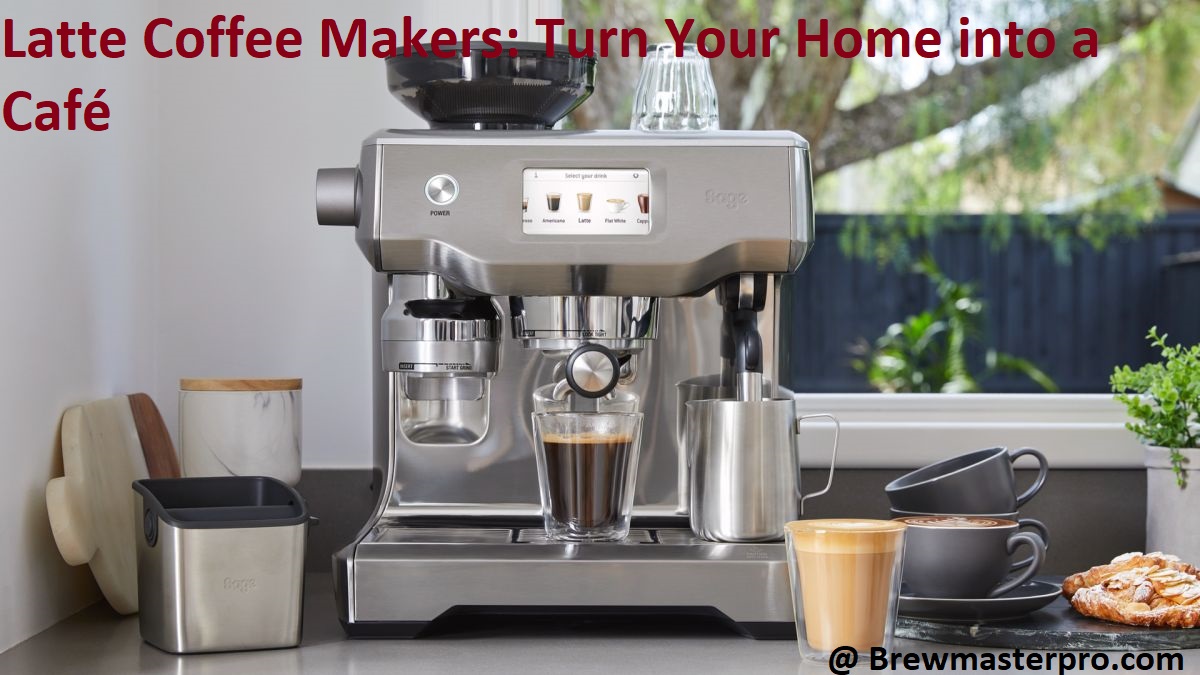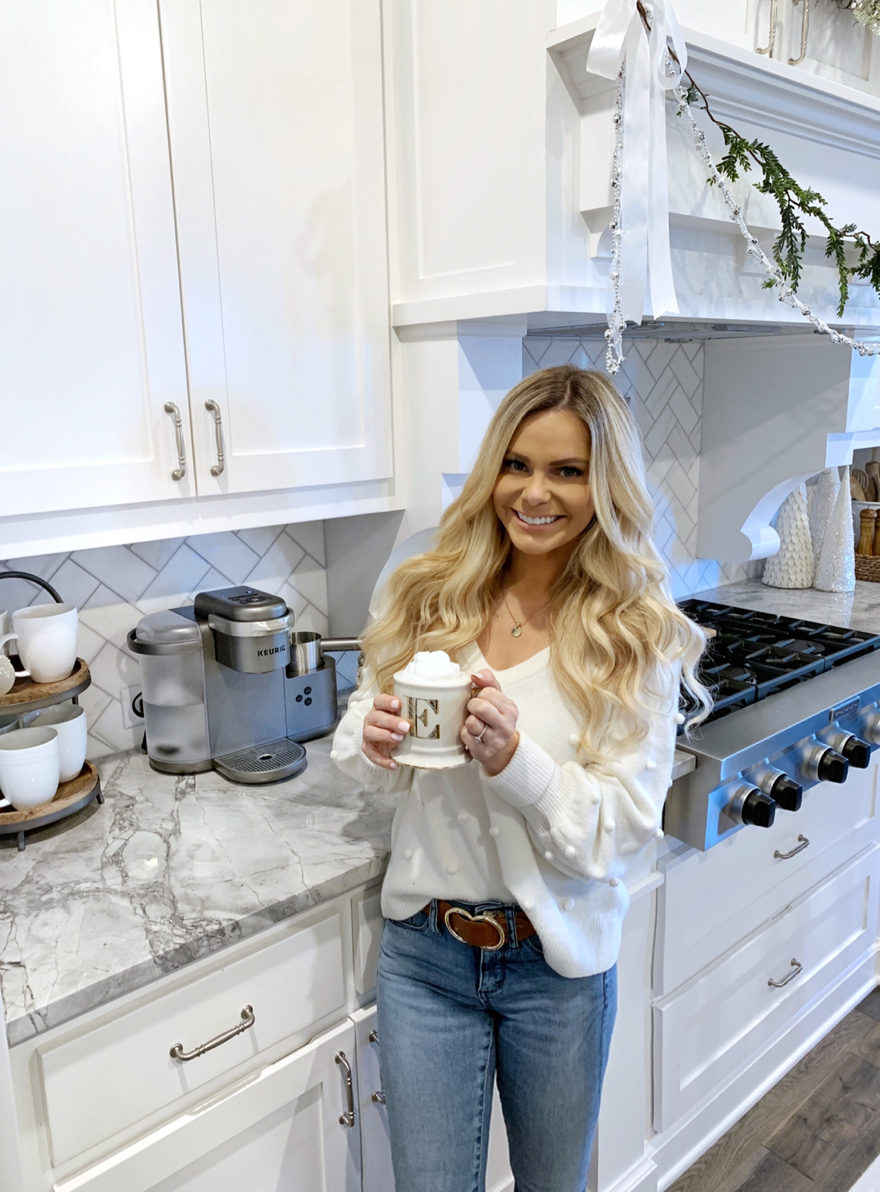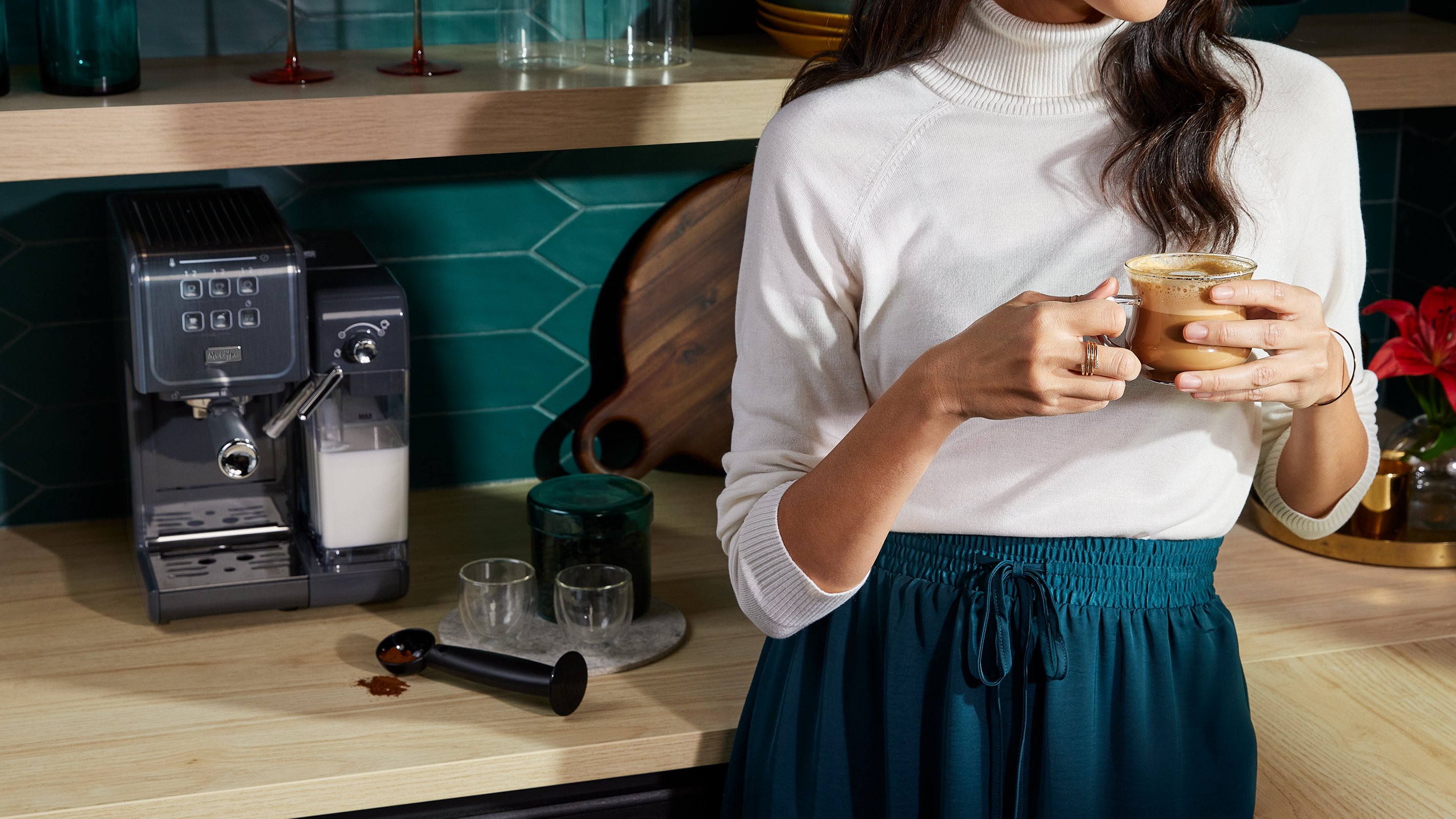Have you ever wanted to turn your home into a café? With the help of a reliable latte coffee machine, you can do just that.
In this complete guide we’ll review some of the best latte machines on the current market — so you can find the one that is perfect for you.
Are you finding it hard to make your morning cup of coffee as good as the local café? Or have you always wanted to recreate and savor the flavors of barista-style coffees right at home? Then investing in a latte coffee maker is the perfect way to turn your home into a café. This guide provides an easy step-by-step approach towards finding the perfect latte machine suited for you and helps you further create drinks with ease.
Let’s begin by exploring the features and types of commercial grade latte machines suitable for home use and how these appliances work, so as to help you make an informed decision.
Types of Latte Coffee Makers
As with any appliance, there are lots of different types on the market and each type has its own set of pros and cons. Here are some of the most popular types of latte coffee makers:
Manual Espresso Machines: Manual espresso machines require you to put in a lot of work to get the perfect cup. You have to grind and tamp your own coffee, fill and condition the portafilter, steam milk, etc. But if you love making coffee manually, then this type is probably your best bet.
Semi-Automatic Espresso Machines: Semi-automatic espresso machines do most of the work for you. They grind, tamp, and fill the portafilter for you; all that’s left for you is to steam milk. This type will give you great control over how your espresso tastes but also allow for a bit more automation as well.
Automatic/Super-Automatic Espresso Machines: Automatic or Super-Automatic models make it even easier; many of them feature automated grinding and tamping as well as preprogrammed shots for consistent espresso extraction. The only thing that must be done manually is steaming milk. The extra convenience often comes at a significant cost though so these models may be out of reach for some people.
Espresso Pods/Capsules: Espresso pods or capsules contain individual servings of preground beans in portable containers made out of aluminum or plastic. These pods are becoming increasingly popular due to their convenience but tend not to produce good shots as they don’t let you control most parameters such as grind size, tamping pressure etc., which can all have an effect on extraction quality in traditional espresso machines.

Manual Latte Makers
Manual latte makers allow users to make espresso-based coffee drinks with finesse and ease, with many machines having attachments such as frothing wands, ports for adding steamed milk, and separate steam valves. These machines are generally available in semi-automatic or manual models. Users of manual machines have both control of the temperature and speed of espresso brewing, as well as the amount of pressurization.
Semi-automatic units typically do not require strictly manual pouring, but rather a press/pull lever that allows for easy water pressure modifications for various purposes (single shot pour or double shot fill). An automatic machine is also available; however, this model often has limitations on grind size adjustments and pre-programmed temperature options offered by the other two types.
In general, most manual machines can produce pour over coffees (directly into the cup) with a tiltable spout that guarantees an even extraction without any added pressure. Manual machines promise consistency in flavor each time you brew a cup.
Semi-Automatic Latte Makers
Semi-automatic latte makers are a step above the more traditional models and more affordable than super-automatic machines. They allow for greater creativity with your coffee and provide you with a more precise espresso shot.
The semiautomatic machines offer more settings for manual espresso drink preparation than automatic ones, meaning that you are in control of the grinding, tamping, and milk-frothing process. These semi-automatic machines range from very basic models with few features to units that feature large pressure gauges to help you regulate the correct setting. You can find models that have pressure gauges or steam wands included as well as other features, such as milk temperature sensors or pour over spouts, that further enhance your home barista experience.
When you’re ready to make an even better cup of coffee at home, then a semi-automatic machine is worth investing in.
Automatic Latte Makers
Automatic latte makers are the perfect choice for those who want an easy-to-use and no-hassle machine. These machines typically feature a built in milk frother, so all you have to do is pour fresh coffee grounds into the top and press a button. The machine automatically froths and mixes your drink for you.
For added convenience, many machines include features such as automatic shut off, adjustable temperature control and digital displays for programming. If you’re looking to get more from your latte experience than just espresso, look for all-in-one models that also steam, warm and foam milk as well. Most of these makers allow you to adjust the flavour strength up or down according to your preference.
The only downside of automatic makers is that they can be expensive when compared with similarly sized semi-automatic pod based machines, but if convenience outweighs price for you then a quality automatic machine is the way to go. With these machines you can turn your home into a virtual cafe in minutes!
Factors to Consider When Choosing a Latte Coffee Maker
Choosing the right latte coffee maker can be a tricky task, and one that must take into account several different factors. This section covers the features to look for when shopping for your own latte machine so that you can make the best possible choice for your needs.
First, consider what type of beverages you would like to make with your machine – do you prefer espresso-based drinks, or will a cappuccino do just as well? Different machines are designed to work best with different types of drinks. If you plan on making more complex milky drinks like lattes and cappuccinos, then it’s worth investing in a machine with an appropriate frothing wand or steam wand so that you can achieve the right texture and taste.
The size of your kitchen is another important factor to consider when selecting a coffee maker. If space is at a premium in your home, then a compact single-serve espresso maker might be best suited. These smaller machines have much less countertop real estate than their full-sized counterparts, but they also generally have fewer features.
Finally, it’s important to think about how much money you’re willing to invest in a machine — not all coffee makers are created equal! Budget options are often simpler machines with manual functions only — such as those requiring users to tamp down their own coffee grinds and remeasure their own milk levels — whereas pricier models offer automated systems that allow users more control over temperature, water levels and other desired settings . Taking this into consideration could help narrow down your choices significantly.
Budget
When shopping for a latte machine on a budget, it’s important to consider the features that you need in order to make the perfect latte at home. Good options in this price range tend to cost one or two hundred dollars. Machines at this price point often offer more than just espresso-making capabilities; they may also come with milk frothers, all-in-one design, programmable settings, and other features for convenience.
However, these machines do have some disadvantages compared to higher-end models such as lower capacity and fewer temperature control options. Buying coffee beans specifically intended for use with espresso machines is still a good idea since pre-ground coffee may not be suitable for use in many budget latte makers.
Size
The size of your machine depends on the quantity of coffee you expect to make. Most home latte makers are small, with a single thermal carafe or pitcher that can make one to two drinks at a time. However, if you entertain often and want to be able to serve multiple guests or prefer larger beverages, you might opt for an expanded version with two carafes. This type of machine is capable of producing up to four drinks in one cycle.
Many professional-style machines are countertop friendly, so you can still get the full flavor of barista-quality espresso without taking up too much space in your kitchen. The majority of countertop latte machines offer quick and easy operation — within minutes you’ll be able to enjoy large cappuccinos and luxurious lattes from the comfort of your own home.
And finally, for those who need it, there are super-sized latte brewers capable of producing more than ten drinks at once. These types are great for large gatherings or high volume cafés but may require extra space on your countertop or special accommodations in terms other than just the electrical outlet requirement.
Ease of use
When you are in the market for a latte coffee maker, ease of use should be a major consideration. Brew times will vary from machine to machine, but look for machines that are intuitive and easy to use. You should also make sure that the device is fairly portable so you can take it with you wherever you go.
Brewing latte at home shouldn’t feel like a chore and it’s important to purchase an appliance that is relatively user-friendly. Look for machines with one-touch operation, programmable timers, pre-programmed settings, delayed start functions and more that make brewing Latte easier than ever.
III. Maintenance and Cleaning of a Latte Coffee Maker
Regular maintenance and cleaning of your latte coffee maker is essential for ensuring that your brewed beverages are tasty each and every time. Fortunately, most automatic coffee makers come with a removable water tank, which makes it easy to keep the device clean and hygienic. Additionally, they feature dishwasher-safe parts, making the cleaning process even simpler.
To begin with, you should make sure that you regularly remove any mineral deposits from the machine by using a specialized descaler or mild vinegar solution to rinse away any impurities. This can help to prevent issues such as reduced flavor and performance of the machine due to corrosion of internal parts or clogging of filters.
It is also important to remember to clean out coffee beans or grounds from all parts of the machine after each use. This simple practice can prevent coffee from hardening and lingering in places where you may have not noticed them before, which could result in an unpleasant taste in your beverage.
Last but not least, when it comes to the milk frother — make sure that you give it a good rinse regularly using hot water and soap. This will help will ensure that no milk residue falls into your espresso shots or latte drinks when making beverages next time around! Follow these steps and your LatteCoffee Maker should be running smooth for years!
Daily Cleaning
Daily cleaning of your latte coffee maker is essential to maintain the flavor and quality of your drinks. Begin by cleaning the removable parts of your machine, like the portafilter and filter baskets, as well as the water container and reservoir for any solid residue or buildup. Give them a thorough rinse under hot tap water after each use.
Make sure to pay special attention to any areas with a buildup, such as around the filter basket or handle. It’s always best to first use a soft brush and mild detergent before using any cleaners. If stubborn clogs persist in these areas, you should use a specific cleaner specifically designed for espresso machines. This will help dissolve mineral buildups, keeping your machine in top working order.
Follow all product instructions when using cleaners of this type; they are often acidic and should not be used on all surfaces.
Weekly Cleaning
Making sure your latte maker stays clean is important for the health and safety of those who use it, as well as optimal flavor in your drinks. A weekly cleaning routine should be established to keep everything clean on the inside and outside of your machine.
For machines with removable parts, you should begin by removing all components according to the user manual included with your device. Wash all removable parts in warm soapy water, rinse well and then dry thoroughly before replacing them. This is most effective when done on a regular weekly basis.

You should also pay special attention to cleaning any deposits from attachments such as milk steaming arms or frothers that build up over time with use. For single-serving machines like espresso makers or superautomatic espresso machines, you can make use of their built-in automatic cleaning cycles to help keep them running at their best.
To keep the exterior clean, use a soft damp cloth to wipe down the outside regularly and also remember to unplug all power cables before beginning any kind of maintenance work. This will ensure that you stay safe from electrical hazards associated with cleaning appliances while they are still plugged in. By following a few simple steps each week, you can ensure that your latte maker is always running at its best and producing great tasting espresso drinks consistently!
Conclusion
At the end of the day, there are many factors that come into play when it comes to choosing a latte coffee maker. Everyone has different needs, preferences, and budgets. As a result, there is no one-size-fits-all machine for everyone.
However, by considering the various types of machines available on the market today and understanding their differences in terms of price, ease of use and coffee quality, you can find the ideal coffee maker for your home. With a little research and knowledge about your options, you can turn your house into a café with ease!
FAQ’S
How to make a cafe latte at home with machine?
To make a cafe latte at home with a machine, you will need espresso, steamed milk, and a milk frother. First, pull a shot of espresso and pour it into a cup. Then, steam and froth milk using a milk frother, and pour it over the espresso, leaving a thin layer of foam on top.
Can you use home coffee machine in a cafe?
It is possible to use a home coffee machine in a cafe, but it may not be practical for a high volume of customers. Home machines may not be designed to handle the continuous use and demands of a commercial environment.
Is it possible to make a latte at home?
Yes, it is possible to make a latte at home with the right equipment and ingredients, such as an espresso machine, steamed milk, and a milk frother.
How do you make a cafe latte?
To make a cafe latte, you will need to pull a shot of espresso and pour it into a cup, then steam and froth milk, and pour it over the espresso, leaving a thin layer of foam on top.
What is the ratio for cafe latte?
The ratio for a cafe latte is typically one-third espresso, two-thirds steamed milk, and a thin layer of foam on top.
What equipment do I need to make a latte at home?
To make a latte at home, you will need an espresso machine, milk frother, steaming pitcher, coffee beans, and milk.
How much milk is in a latte?
A latte typically consists of one shot of espresso and around 8-10 ounces of steamed milk.
What is cappuccino vs latte?
A cappuccino is made with equal parts of espresso, steamed milk, and milk foam, while a latte has more steamed milk and a thinner layer of foam on top.
What machine is needed to make lattes?
To make lattes, you will need an espresso machine with a steam wand for steaming and frothing milk.
How to make a cheap latte at home?
To make a cheap latte at home, you can use a stovetop espresso maker, a milk frother, and whole milk instead of expensive alternatives like almond or oat milk. Use freshly ground coffee beans to save money and get the best taste.
See Also-
- Best coffee and espresso maker combo 2023
- Best coffee maker for an rv 2023
- Best coffee maker under $50 2023
- Best coffee maker under $100 2023
- Best commercial coffee maker 2023


